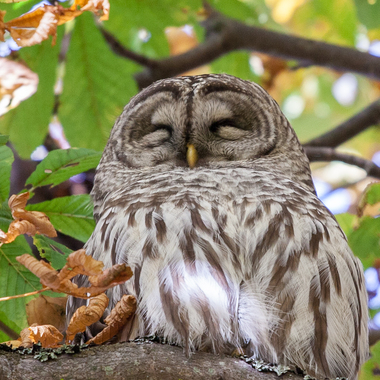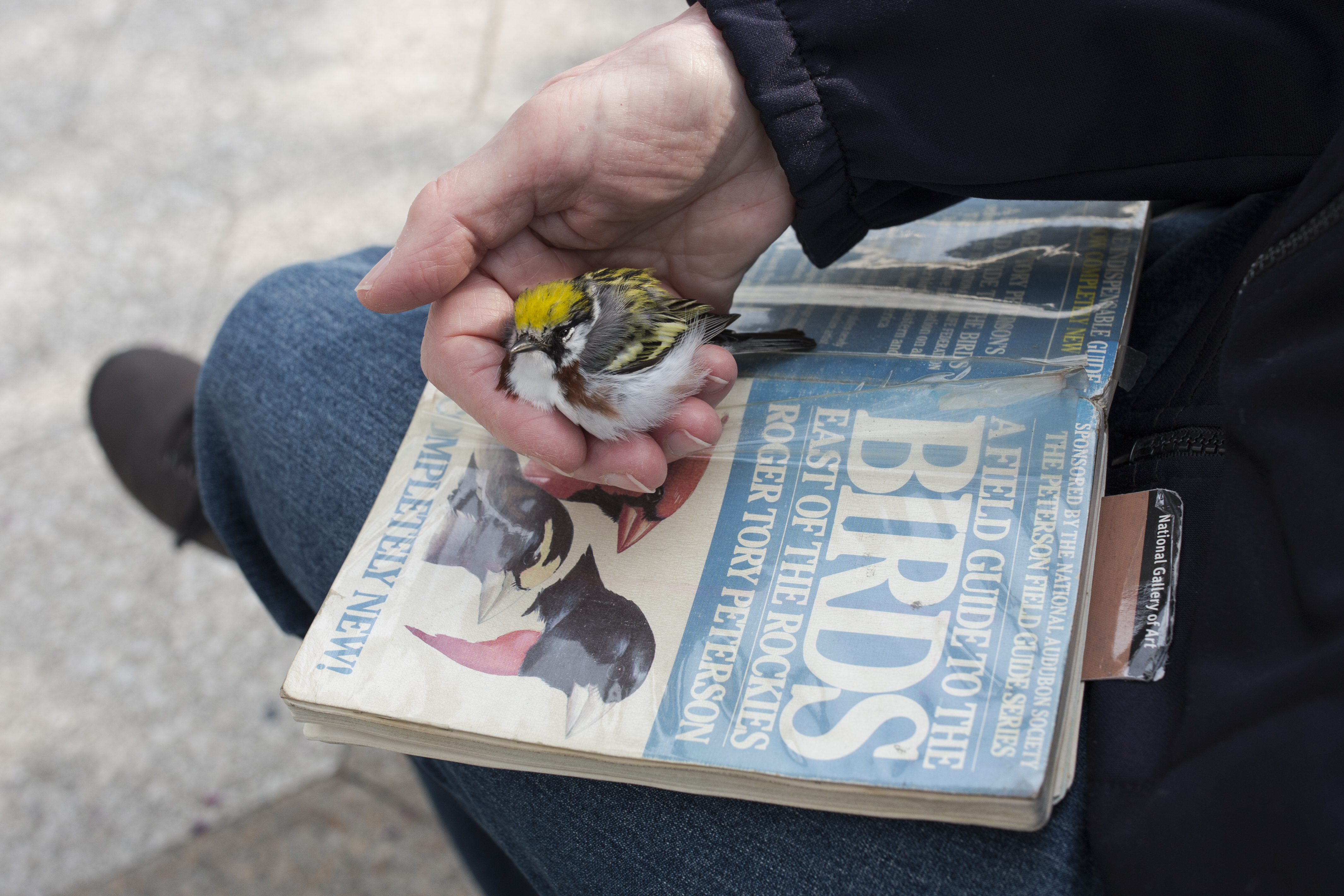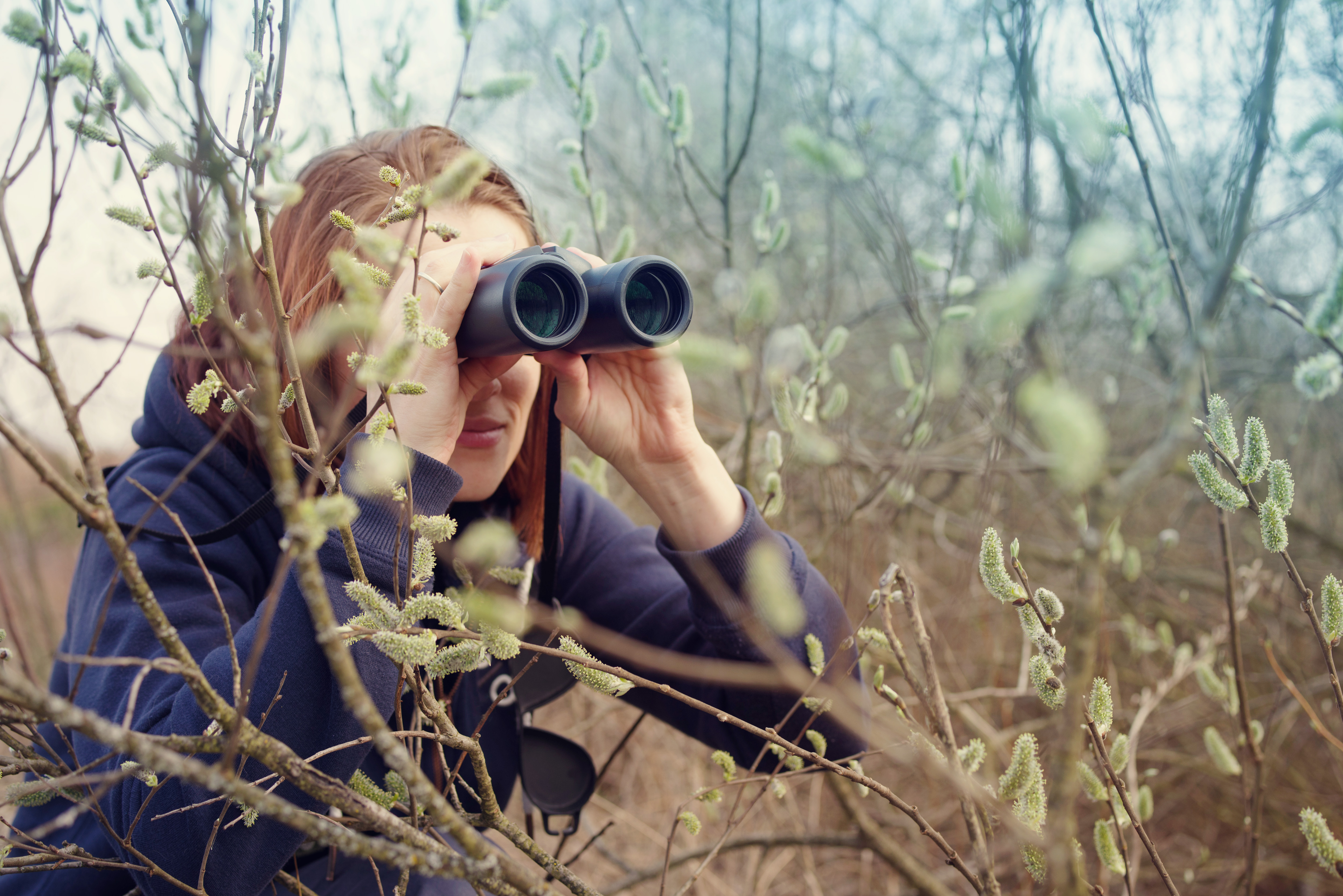
Barred Owls, which visit New York City during migration and over the winter, need undisturbed rest during the day. Photo: M.E. Sanseverino/CC BY-NC-ND 2.0
Barred Owls, which visit New York City during migration and over the winter, need undisturbed rest during the day. Photo: M.E. Sanseverino/CC BY-NC-ND 2.0
Birding Law & Ethics
Glimpsing an owl that is mostly hidden (if we keep a respectful distance), or knowing that a rare warbler is nearby, but we can’t see it, can be frustrating. Most birders know the fever that can overtake us as we try to “get that bird”!
Many of our bird species are in decline, however, and birds may already be stressed when they find themselves in the strange terrain of New York City. And as we share our birding areas with many other individuals, particularly in our most popular New York City parks, we must be particularly diligent in respecting norms. As a conservation organization and as a community of bird-lovers, NYC Bird Alliance recommends that birders always keep our birds’ well-being as their first priority, and be respectful of fellow birders, by following the American Birding Association's Code of Birding Ethics.

This injured Chestnut-sided Warbler, collected by a Project Safe Flight volunteer, was taken to a licensed rehabilitator. Photo: Sophie Butcher
This injured Chestnut-sided Warbler, collected by a Project Safe Flight volunteer, was taken to a licensed rehabilitator. Photo: Sophie Butcher
Legal Protection of Birds
Native birds are protected under the Migratory Bird Treaty Act, which prohibits the taking of nests, eggs, and feathers, except for scientific purposes. It also prohibits killing (except those species for which there are designated hunting seasons), harassing, or "adopting."
If you find a young bird that appears to be abandoned, it is often best to leave it alone; the bird’s parents may be close by and will continue to care for it. Learn how to decide what to do if you find a young or injured bird.

The great popularity of birding in NYC requires some special consideration for the benefit of both birds and fellow birders. Photo: Savitskaya Iryna/Shutterstock
The great popularity of birding in NYC requires some special consideration for the benefit of both birds and fellow birders. Photo: Savitskaya Iryna/Shutterstock
Ethics and Etiquette of Birding in NYC
Although some birds seen in New York City are habituated to people, many have rarely encountered a human being. Maintain a distance from wild birds. Stay on the trails and paths. By chasing birds through the underbrush or forest, you disturb them. You may deprive migrants, which are on a tight energy budget, of valuable time to find food, fatten up, and continue on their migration journey. For nesting birds, disturbance can cause them greater stress: always keep a respectful distance from nesting birds. If birding with a dog, always keep your dog leashed. In going off trail, you may also crush vegetation, which in our city parks often consists of carefully planted and maintained native species.
NYC Bird Alliance encourages ethical birding behavior for the benefit of both birds and fellow birders. Birders and photographers should make every effort to reduce the disturbance their presence causes for birds, especially in areas visited by large numbers of people, like Central Park. In those areas especially, NYC Bird Alliance recommends that observers refrain from leaving trails.
Responsible Owl-Watching
An owl is always an exciting find on a bird walk. These mostly nocturnal birds find a quiet, hidden spot to sleep or “roost” during the day. Please be quiet near roosting and nesting owls. A flushed owl may then be harassed by crows, Blue Jays, and other birds, and not be able to rest. Not all owls survive the winter, and added stress may be harmful. Stay as far away as possible from any owl and use a field telescope or binoculars to observe it. (If an owl is staring at you, you are probably too close.) Make all visits short. Do not linger to get better photographs.
Use of Birdsong Recordings (“Playback”)
While there is some disagreement among scientists regarding the dangers of playing recorded songs and calls to attract birds, such “playback” may unnecessarily stress and distract birds, particularly during nesting season, when parent birds best remain focused on caring for vulnerable young. In popular birding spots, however, the playing of recorded bird sounds is also disturbing to other birders, who may bird by ear, and may document the birds they hear in eBird as official accounts.
Given the great numbers of birders that visit New York City parks to enjoy the birds (as well as to find some peace and quiet in nature), NYC Bird Alliance recommends that birders abide by what has been a longtime tacit agreement among most experienced birders to not play bird call and song recordings in New York City parks. While getting birds to come close in response to a recording can make it “easier” to see a bird, the experience of searching for a bird, and the triumph of finally finding it, is an element of birding that makes it very exciting and rewarding over the long term. By avoiding playback, we also ensure that the birds that stop over and breed in our parks, in need of rest and sustenance, are not further stressed by birders eager to “get their bird.”
For more details on ethical birding behavior, view American Birding Association's Code of Birding Ethics.


